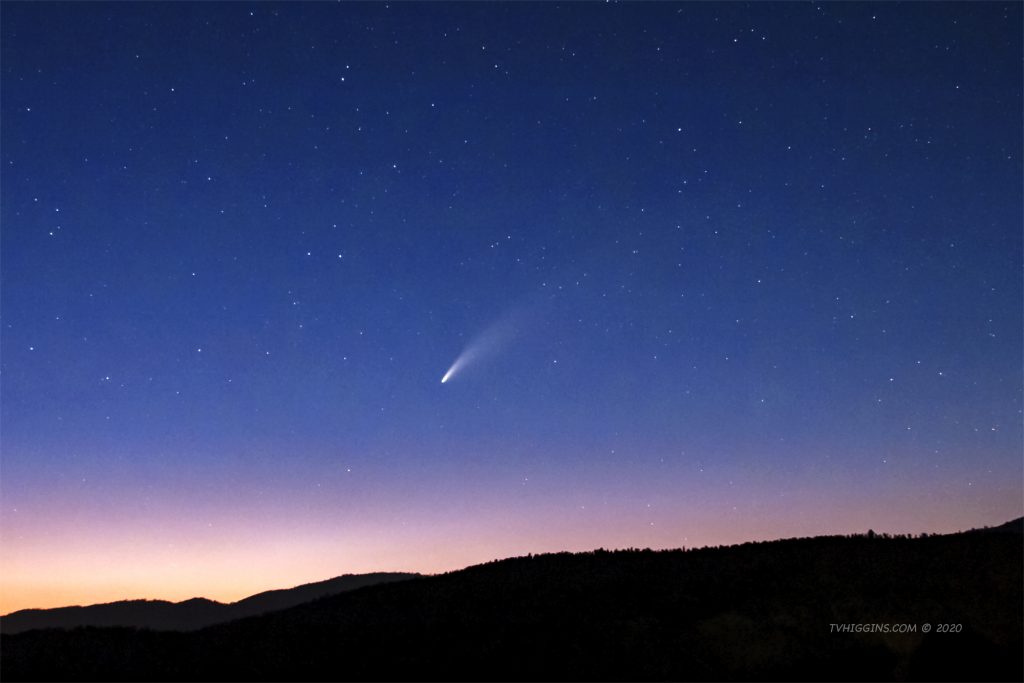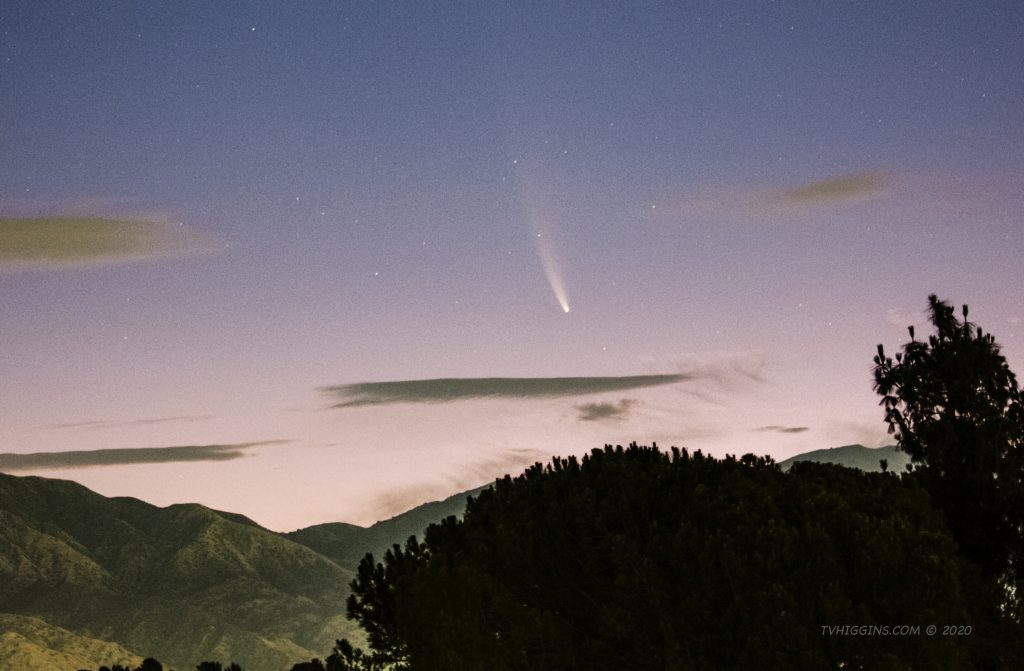Comet NEOWISE on July 16
- Telescope: None
- Mount: Standard camera tripod
- Autoguiding: No
- Optical Configuration: 28-135mm f/3.5-5.6 lens @ 28mm
- Filter: None
- Camera: Canon 60Da
- Light Frames: Single frame
- Calibration: N/A
- Exposure Time: 8s
- ISO: 2000
- Pre-Processing: None
- Processing: Photoshop CC
- Imaging Location: One hour north of Los Angeles, Calif.
Comet NEOWISE has moved from the morning to the evening and now sets after the sun here in Southern California. However, it has become increasingly harder to spot from light-polluted Los Angeles, so this image was grabbed about an hour north of the city at 9:23 p.m. on July 16, 2020.
[This one’s also for Phil and for all the great moments we shared over the years. Like comets, memories may fade with time, but you, my friend, will always be remembered.]

